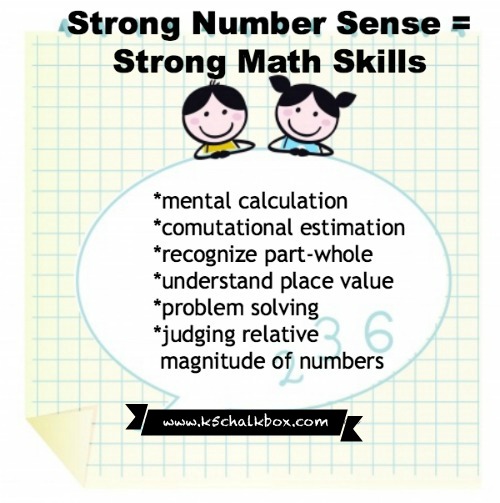Number sense begins very early and must be a focus of primary math. This is the solid foundation in math that all kids need.
A sense of numbers is critical for primary students to develop math problem solving skills.
The National Council of Teachers of Mathematics increasingly calls for districts to give more attention to building this skill, and studies have found that number sense accounts for 66% of the variance in first grade math achievement. They council (USA 1989) have also addressed five critical areas that are characteristic of students who have good number sense:
- Number Meaning
- Relationships Between Numbers
- Number Magnitude
- Operations Involving Numbers
- Referents for Numbers/Quantities (referents are words or phrases that denote what something stands for)
In a study by Jordan, Locuniak, Ramineni and Kaplan entitled Predicting First-Grade Math Achievement from Developmental Number Sense Trajectories, it was shown that “early sense of numbers (sic) is a reliable and powerful predictor of math achievement at the end of first grade.”
What is Number Sense in Children?
Having a sense of how numbers work is a very broad topic that covers all numerical thinking. At it’s core, it is making sense of math concepts and mathematical reasoning.
Operationally, it is counting skills, having number knowledge, using estimation, and the ability to use problem solving strategies.
Knowing the why of how numbers work is of utmost importance, and children should not be shown the how until they understand the “why.” Techniques such as using ten frames and using concrete models to show place value concepts are daily necessities for young children.
Inquiry-based approaches (such as math dice games) to teaching children mathematics should be utilized as primary teaching methods in the early grades.
This is not to say that explicit teaching of sense of numbers skills is not essential, especially for those students from low socio-economic status. We absolutely need to do this.
It is saying that teachers should provide multiple opportunities for students to experience numbers and make connections before putting the pencil to paper.
Activities for Building Number Sense
Carefully consider your objectives and the type of learners in your room when choosing a math game to include. NCTM also suggests you consider:
- the type of mathematical practices involved in each game (there should be more than one)
- how feedback will be given
- does the game encourage competition, collaboration and communication?
- the types of strategies students will have to use to solve a puzzle or to win
Marilyn Burns lists seven ways teachers can directly impact a developing sense of numbers.
1. Link school math to real-world experiences
Present students with situations that relate to both inside and outside classroom experiences. Students need to recognize that numbers are useful for solving problems.
2. Model different computing methods
Focus on what methods make sense for different situations. There is no one right way to compute. We need our students to be flexible thinkers.
3. Mental Math
Real life requires mental computation. Students need to be able to move numbers around in their heads and discuss their strategies. *Try playing Deep Sea Duel from Illuminations. Very challenging!
4. Discuss Strategies
Students must be able to explain their reasoning. This not only will give you insight into how they think, but also will help the children to cement their own ideas and reevaluate them.
*nrich has free activities (new ones each month) that you can use in the classroom. The focus in on multiple ways of thinking to arrive at an answer. Students can even submit them to the site and a best strategy is chosen each month.
5. Estimate
This should be embedded in problem solving. This is not referring to textbook rounding. Real life estimation is about making sense of a problem and using anchor numbers to base reasoning on. *Guess It! is a game from The Problem Site (a really terrific math site!).
6. Question Students About Reasoning Strategies
All the time, not just when they make a mistake. Constantly probing sends several important messages: your ideas are valued, math is about reasoning, and there are always alternative ways to look at a problem.
7. Measuring Activities
When teaching children mathematics, measuring activities should be front and center. Make students verify estimates through doing.
